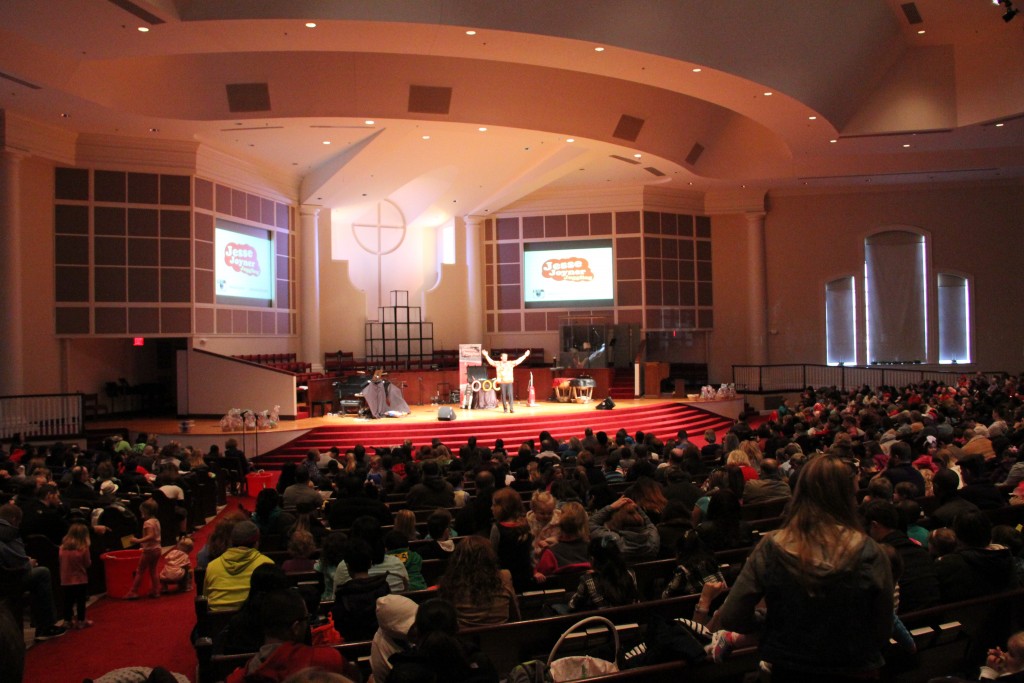
 I am somewhat of a bibliophile (one who loves books). And more particularly, I love to learn about and study the book of all books – the Bible. I guess that would be a more accurate use of the term “Biblio”-phile.
I am somewhat of a bibliophile (one who loves books). And more particularly, I love to learn about and study the book of all books – the Bible. I guess that would be a more accurate use of the term “Biblio”-phile.
So it is with excitement and anticipation that I share with you a new curriculum from Phil Vischer, the creator of the well known Veggie Tales series (in fact, Phil is the famous scrappy voice of Bob the Tomato). This new curriculum, designed for use in Sunday School or other weekly church gatherings with elementary-aged kids, is called Buck Denver Asks…What’s in the Bible?
Here is the brief summary straight from the curriculum website:
“Buck Denver Asks … What’s in the Bible? is the 13-DVD series from VeggieTales® creator Phil Vischer. In his first new project since VeggieTales, Vischer has set out to teach kids (and parents!) the story of the Bible – God’s great rescue plan! We know the stories of Moses, Noah, David, and Jesus, but in this groundbreaking new Bible DVD series, we learn how they all fit together to tell one big, redemptive story. Vischer’s signature wit shines through with his all-new cast of characters, fast-paced flash animation, and catchy tunes. This is one journey through the Bible you won’t want to miss!”
I took a look at the info and some samples of the curriculum and I am impressed overall. I would certainly recommend it (and if you keep reading, you will see some special discounts on the curriculum that I can offer my readers).
Here are the things I like about What’s in the Bible?….
- A scope and sequence guided by the overarching narrative of the Bible, rather than topics. I know a lot of curriculum out there follows a general chronological order of the Bible, but this one aims to cover the entire Bible while constantly keeping in mind the overall cohesion and interconnectedness of the Bible. And it uses the entire story of the Bible as the driving force of content rather than just teaching topics illustrated by a few popular Bible stories.
- Use of a variety of learning methods. This curriculum is self-described as being “media-driven,” but that doesn’t mean “media-only.” There are plenty of interactive activities in small groups. There are hands-on activities as well as more cognitive activities (such as review through trivia questions). I like curriculum that keeps moving and draws on a variety of teaching methods and learning styles. I like how the videos use both puppets and Phil teaching (as himself). The puppets help the kids stay engaged (while teaching about the Bible) and Phil’s teaching brings a very real and pastoral aspect to the content. He is both deep and understandable at the same time. I like the combination of all those elements.
- The commitment to Scripture. This might sound obvious, but it is important that a curriculum have a strong Biblical grounding in terms of how the writers view Scripture. Phil Vischer has a strong commitment to Scriptural inspiration, authority, reliability, and relevance. To him, the Bible is not just the world’s best selling book that teaches us about the religion of Christianity and how people wrote about it centuries ago. For Phil, the Bible is God’s inspired Word – a revelation from God to us as His message of love and story of redemption. And that changes everything.
- It’s all right there. You basically have a curriculum in a box. From what I reviewed, it did not appear that the teachers (who are usually volunteers) need to bring much of anything with them except the videos and other handouts/materials provided by the curriculum itself. Any way to cut down on unnecessary clutter is helpful.
Here are the things I think can be improved….(which is not much, by the way)
- There is a puppet named Michael who rides in the back of a car on the way to grandma’s house. I’ve seen him before in other Buck Denver videos. Maybe it is my personal preference, but his voice is hard for me to understand. It is very high-pitched and sounds extremely unnatural for whoever is providing the voice for him. I think it is important to have clear and legible communication if you want to convey such quality content.
- Some of the puppets have no eyes (or, at least you can’t see the eyes due to over-furrowed brows or hats). I think the eyes bring life to a puppet (or any other creature for that matter). Again, it might be my personal preference, but I feel like I receive communication better when I can see some eyes in the puppet, person, or creature. Would you like a pastor to preach a sermon to you with a hat down over their eyes the whole time?
- There is an extra DVD for a Christmas series (yay!). But it would also be nice to have a special DVD series for Lent (the weeks leading up to Easter). They cover the Gospel stories and the death and resurrection of Christ, but I think it would be nice to have a dedicated series that follows the weeks of Lent.
There is not much to criticize here, because Phil and his team have worked very hard to put out a great product that will help lots of churches communicate the truth of the Bible in a largely Biblically illiterate culture (and becoming more and more so, unfortunately). Many of us are familiar with the success of Veggie Tales and the way it has become “salt and light” by teaching Biblical truths in ways that are not preachy and are palatable to the masses – both Christian and secular. My hope is that this “What’s in the Bible” project will similarly penetrate into our culture and society in a way that can instruct young people about the most popular (and I believe) most important book in history.
So, here’s the discount I promised you (as well as a free sample):
Click on this link to get ALMOST 50% OFF retail price (good through the middle of November 2014) and an opportunity to get a free sample: http://promos.whatsinthebible.com/kidmin-2014/










